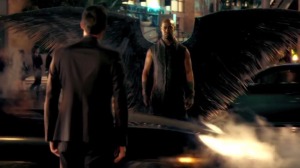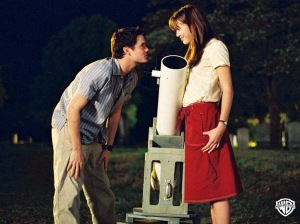 Occasionally I’ll crowdsource, as it were, a childhood memory. I was born and grew up in Oshawa, Ontario, living there between 1957 and 1976. Other than brief work-related stays from December 1983 to September 1984, and again from June to September 1992, I haven’t lived there since 1976, some 46 years ago. So when I needed help recalling a particular used and rare books dealer, my go-to place for research was the private Facebook group Vintage Oshawa, which has about 19,400 members and describes itself as “a place to post pictures, memorabilia & share tales of Oshawa past (pre-1980).” After all, 19,400 heads might be better than one in this case, I reasoned. And I had success almost four years ago back in May 2018 when I asked in classic Facebook style “who remembers” Rose Bowl Fish and Chips that operated at the corner of Bond and Prince streets? More than 200 members of the group either liked the question or responded with a comment.
Occasionally I’ll crowdsource, as it were, a childhood memory. I was born and grew up in Oshawa, Ontario, living there between 1957 and 1976. Other than brief work-related stays from December 1983 to September 1984, and again from June to September 1992, I haven’t lived there since 1976, some 46 years ago. So when I needed help recalling a particular used and rare books dealer, my go-to place for research was the private Facebook group Vintage Oshawa, which has about 19,400 members and describes itself as “a place to post pictures, memorabilia & share tales of Oshawa past (pre-1980).” After all, 19,400 heads might be better than one in this case, I reasoned. And I had success almost four years ago back in May 2018 when I asked in classic Facebook style “who remembers” Rose Bowl Fish and Chips that operated at the corner of Bond and Prince streets? More than 200 members of the group either liked the question or responded with a comment.
How we consolidate, access and sometimes geographically transpose locations in long-term memory is a complex process beyond the ken of my knowledge of neuroscience, but here is what I asked earlier today based on what I suspected to be a real but perhaps flawed memory:
“Does anyone recall a used bookstore on Division Street in Oshawa in the 1970s and 1980s, not far from the old General Motors North Plant? Brown brick, I think, like other buildings in the neighbourhood. A bit dingy in terms of lighting inside but not without its charms. I think the name might have started with the letter M, but it was all quite a while ago. Given that we’re talking about 40 or 50 years ago, it’s also possible I’ve conflated the idea of a bookstore on Division Street in the area of the GM North Plant with a health food/Asian vegetable market store in that location and the bookstore was on the west side of Simcoe Street South, near John Street East, not far south of a Pepi’s Pizza location on that corner. I still have fond, though distant memories of my friend Mike Byrne, working there as a cook in high school circa 1973-74, and wrangling his friends the odd late-night pie … the pepperoni pizza … greasy, yes, sure. But superb also.
The mention of Pepi’s Pizza was perhaps not essential to answering the question, given the focus is on a bookstore and Asian grocery store, but mentioning a favourite childhood eatery in Oshawa, be it Pepi’s or Mother’s Pizza Parlour and Spaghetti House, or perhaps Red Barn or Burger Chef, always is a good memory prompt for any even tangentially related story I’ve found as a writer.
So what did I learn today from folks in Vintage Oshawa? When I said, I think the name might have started with the letter M,” turns out I was correct as dozens of readers spelled it out for me as Morgan Self, which I instantly knew as correct. But commenters went well beyond that in their help. Apparently, there were two Morgan Selfs who were proprietors of their … err … self-named bookstore, father and son. And they lived on Shakespeare Avenue another commenter noted (their bookstore was at 84 Simcoe St. S.) Now, I confess my fact-checking skills as a blogger aren’t perhaps as well-honed as they had to be as a pre-Google and pre-Wikipedia copy editor on the rim at daily newspapers, but I just had to Google Shakespeare Avenue to make sure this was by the book and there was such a street in Oshawa (I didn’t recall it) and I wasn’t being audaciously pranked on social media prior to April 1. Turns out to be legit. There is such a street. Whether the book-selling Selfs lived on it would take more verification for a newspaper back in the day, but for us present-day bloggers, not so much. Editors in their day were the last-line-of-defence fact checkers. When you wear a writer’s hat, you are a storyteller and there’s an admonition that a writer should never let the facts stand in the way of a good story. This was true even before 2017 when Sean Spicer came along and elevated the notion to high principle. That said, the photograph accompanying this post is admittedly for illustration purposes only. It is not the inside of the long-gone Morgan Self bookstore in Oshawa. At least I think it’s not.
You can also follow me on Twitter at: https://twitter.com/jwbarker22
Tag Archives: Asian
Lisa Montgomery is scheduled to die Jan. 12 in the federal death chamber in Terre Haute, Indiana, and would be only the fourth woman ever executed by U.S. federal authorities and the first in more than 67 years



 Lisa Montgomery drove from Kansas to Missouri and fatally strangled a pregnant woman, Bobbie Jo Stinnett, cut open her body, and kidnapped her baby on Dec. 16, 2004, as part of a premeditated murder-kidnap scheme.
Lisa Montgomery drove from Kansas to Missouri and fatally strangled a pregnant woman, Bobbie Jo Stinnett, cut open her body, and kidnapped her baby on Dec. 16, 2004, as part of a premeditated murder-kidnap scheme.
Montgomery, 52, the only woman among 52 federal death row prisoners, is scheduled to be executed Jan. 12 by lethal injection by the Federal Bureau of Prisons in the federal death chamber at U.S. Penitentiary Terre Haute, Indiana. The Death Penalty Information Center, a Washington, D.C. based a national non-profit organization, says 22 of the federal death row inmates are white, 22 are black, seven are Latino and one is Asian.
She would be the first female United States federal prisoner executed since Bonny Brown Heady, 41, was executed in Missouri’s gas chamber, along with co-defendant Carl Hall, 34, in Jefferson City on Dec. 18, 1953, for the Sept. 28 kidnapping and murder across the state line in Lenexa in Johnson County, Kansas of six-year-old Robert “Bobby” Cosgrove Greenlease Jr. from Kansas City, Missouri, whose father Robert Greenlease Sr. was a multi-millionaire auto dealer, and the requested $600,000 ransom payment was the largest in American history at the time.
As well as being the first female federal inmate executed in more than 67 years, Montgomery would be only the fourth woman to be executed by federal authorities, the first being Lincoln assassination conspirator Mary Surratt, one of eight Lincoln co-conspirators tried by a military court and found guilty on June 30, 1865, and given various sentences depending upon their involvement.
Lewis Powell, George Atzerodt, David Herold, and Mary Surratt were charged and convicted of conspiring with John Wilkes Booth, who entered President Abraham Lincoln’s State Box at the Ford Theatre in Washington, D.C. on April 14, 1865, and shot and mortally wounded him. All were hanged at the Washington Arsenal on July 7, 1865 – with Surratt becoming the first woman executed by the United States federal government.
Ethel Rosenberg, 37, who, along with her husband Julius, 35, were convicted of conspiracy to commit espionage as Soviet spies, and were executed by electric chair on June 19, 1953, six months before Heady.
Montgomery, who doctors, psychologists and social workers have all concluded over the last 15 years, is seriously mentally ill after being sexually abused as a child in what amounted to torture enduring across years, drove from her home in Kansas to Stinnett’s home in Skidmore, Missouri, purportedly to purchase a puppy. Once inside the residence, Montgomery attacked and strangled Stinnett – who was eight months pregnant – until the victim lost consciousness. Using a kitchen knife, Montgomery then cut into Stinnett’s abdomen, causing her to regain consciousness. A struggle ensued, and Montgomery strangled Stinnett to death. Montgomery then removed the baby from Stinnett’s body, took the baby with her, and attempted to pass it off as her own. Montgomery subsequently confessed to murdering Stinnett and abducting her child. In October 2007, a jury in the U.S. District Court for the Western District of Missouri found Montgomery guilty of federal kidnapping resulting in death, and unanimously recommended a death sentence, which the court imposed. Her conviction and sentence were affirmed on appeal. On Jan. 1, a three-judge federal appeals panel of the U.S. Court of Appeals for the District of Columbia Circuit reversed a Dec. 24, 2020 district court ruling that had vacated her execution date, and reinstated her execution date subject to review by the full appeals court.
You can also follow me on Twitter at: https://twitter.com/jwbarker22
The Devil, Prince of this World, is not surprisingly about to get his pop culture due on Fox Television as Lucifer Morningstar, recently retired as Lord of Hell and running a piano bar in Los Angeles, the City of Angels
Some movie film buffs are attracted to 1940’s and 1950’s Hollywood film noir, the stylish but low-key black-and-white German expressionist influenced flicks that emphasize cynicism and sex as motivations for murder and other deadly sins (not necessarily in that order). Think Howard Hawks’ The Big Sleep in 1946, with Lauren Bacall and Humphrey Bogart, based on Raymond Chandler’s 1939 novel of the same name. Or perhaps the 1950 classic, D.O.A., starring Edmond O’Brien and Pamela Britton.
Both are fine films, as are many others of the genre. But I wouldn’t say I am quite an aficionado of film noir. Rather, I appreciate it on its artistic merits.
The same is true for TV series science fiction or sci-fi. While I am a sucker for a good story with elements of time travel or parallel universes (“The City on the Edge of Forever,” the second to last episode of the first season of Star Trek, first broadcast on Thursday, April 6, 1967, which was awarded the 1968 Hugo Award for Best Dramatic Presentation, remains in a league of its own in my mind), I’m not quite a diehard Trekkie, although I think the original series, which ran on NBC Television for three seasons from 1966 to 1969 is superb, albeit cheesy. But cheesy is OK. Popular culture is made up of a rich cornucopia of cheesy television and movies that almost require a mandatory bowl of Cheetos® to consume such classics as the black-and-white a double-bill of The Brain That Wouldn’t Die, also known as The Head That Wouldn’t Die, a 1959 science-fiction-horror film, directed by Joseph Green (made for $62,000 but not released until 1962), and Plan 9 from Outer Space, the 1959 American science-fiction thriller film, written and directed by Ed Wood on a $60,000 budget, and dubbed by some critics as the worst movie ever made.
While it took me a while to warm up to it, I also came to like Star Trek: The Next Generation, which aired from 1987 to 1994. I’ve also seen most, although probably not all, of the movies from the seemingly endless Star Trek-spawned movie franchise.
Three additional Star Trek spin-offs, Star Trek: Deep Space Nine, Star Trek: Voyager, and Star Trek: Enterprise; well, I could probably count on the fingers of one hand how many episodes of the combined series I’ve ever watched, although knowing Star Trek: Enterprise, which aired originally between 2001 and 2005 and was titled simply as Enterprise for its first two seasons, features Scott Bakula of Quantum Leap fame as Capt. Jonathan Archer, and there is a recurring plot device based on the Temporal Cold War, in which a mysterious entity from the 27th century uses the Cabal, a group of genetically upgraded Suliban, to manipulate the timeline and change past events, I probably will have to give in and start watching its 98 episodes at some point.
Then there is the Christian movie genre. We discover things where we discover them. While I had seen The Rapture, a rather odd but interesting movie starring Mimi Rogers and David Duchovny, later of The X-Files and Californication fame, on VHS videotape cassette in Durham, North Carolina shortly after it was released in 1991, for me, my first real introduction into what I would call the Christian movie genre took place a decade later in Yellowknife, of all places (when I lived in Yellowknife a standard observation was that there were more bars than churches, although that’s hardly unique to Yk).
I remember seeing A Walk to Remember, an American coming-of-age teen romantic drama, when it was released in 2002 downtown at the Capitol Theatre on 52 Street, starring Shane West and Mandy Moore as Landon Carter and Jamie Sullivan, based on the 1999 novel of the same name by the Catholic romance fiction writer Nicholas Sparks. That would be the Nicholas Sparks whose earlier 1996 book, The Notebook, was released as a movie of the same name in 2004, two years after A Walk to Remember came to film screens. I can’t recall exactly how I came to find myself in the Capitol Theatre to watch A Walk to Remember. I don’t recall any of my colleagues going with me, although more than one expressed incredulity the next day when they asked me and I said I enjoyed the movie. I saw it again a couple of years ago for the first time on DVD, and I still enjoyed it.
I won’t spoil the plot for you; the summary is on the Internet and easy enough to find and the ideas, to be honest, are not exactly original. Cheesy? You bet. Pass the Cheetos®. But I’m happy to say the movie was made for about $11 million and has taken in about $47.5 million at the box office. Not a particularly big budget film and far from record box office, but OK.
I wrote a piece here in soundingsjohnbarker (https://soundingsjohnbarker.wordpress.com/2014/09/15/flying-largely-under-the-mainstream-cinematic-radar-christian-movie-genre-is-hot/) last Sept. 15 headlined, “Flying largely under the mainstream cinematic radar: Christian movie genre is ‘hot’” where I mentioned just a few of last year’s Christian movie offerings, including The Giver, starring three-time Academy award winner Meryl Streep and Jeff Bridges, which is set in a fictional post-war 2048 where the community has decided to get rid of colors and, as a consequence, different races and feelings. All citizens have had the memories from before erased from their minds.
I also talked a bit about Heaven Is for Real, directed by Randall Wallace and written by Christopher Parker, based on Pastor Todd Burpo and Lynn Vincent’s 2010 book of the same name, and starring Greg Kinnear, Kelly Reilly, Jacob Vargas and Nancy Sorel, which tells the story of three-year-old Imperial, Nebraska, native Colton Burpo, the son of Pastor Burpo, and what he says he experienced heaven during emergency surgery; and When the Game Stands Tall, starring Jim Caviezel, best known for portraying Jesus in Mel Gibson’s blockbuster 2004 film The Passion of the Christ, now playing Catholic De La Salle High School Spartans’ football coach Bob Ladouceur (with Laura Dern as his wife, Bev Ladouceur), and telling the story of the record-setting 151-game 1992–2003 winning streak by De La Salle of Concord, California, just east of San Francisco. The movie is an adaptation of the 2003 book of the same name by Neil Hayes, then a columnist with the Contra Costa Times. The movie was filmed in Louisiana.
As well, I mentioned Tim Chey’s movie, Final: The Rapture, released in 2013 in theatres, but on DVD just last November, starring Jah Shams, Mary Grace, Carman, Masashi Nagadoi and Dave Edwards. While there have been generally cheesy church-sponsored, Halloween “Hell Houses” videos in the past, Final: The Rapture is an unusual sub-genre of Christian horror movie or Christian disaster movie. The movie’s poster promise, “When the Rapture strikes … all of hell will break loose.”
Chey said his purpose is “to scare the living daylights out of nonbelievers … If it means I have to make a horror film to make it realistic to win people to Christ, then so be it.”
Online Maranatha News of Toronto calls Final: The Rapture “the scariest Christian movie ever.”
Final: The Rapture depicts the apocalyptic chaos that ensues for four nonbelievers – an African-American, an Asian, a Hispanic and a Caucasian man living in Los Angeles, Tokyo, Buenos Aires and on a South Pacific island, after the Rapture occurs. “In Los Angeles, Colin Nelson desperately attempts to flee to Bora Bora. Keenly aware that he’s in the Tribulation period, his only hope is in a mysterious man. In Tokyo, a journalist, Masashi, tries to unravel the disappearance of millions of people as the government closes in on him. In Buenos Aires, Marie searches for her final relative as time runs out. And on a deserted island in the South Pacific, Tom Wiseman, an avowed atheist, attempts to be rescued after his plane goes down.”
The film was shot in six countries over five months for about $7 million, Final: The Rapture, raised the necessary production money across a spectrum of investors, ranging from faith-based to hedge funds.
Just in passing, I wrote about God’s Not Dead with Kevin Sorbo; Noah with Russell Crowe; Son of God, produced by evangelical Mark Burnett from Survivor, and his Catholic wife, Roma Downey (whose A.D.: The Bible Continues miniseries based on the early church, as described in the first 10 chapters of the Acts of the Apostles is airing on NBC currently); and the “new” Left Behind movie about the Rapture by Paul Lalonde and Stoney Lake Entertainment, with Nicolas Cage starring as Rayford Steele, and Civil Twilight’s song “Letters from the Sky” being used in the trailer, released in North American theatres last October.
The interesting thing is if I was to revisit the genre today nine months later for a comprehensive update, I’d be saying the Christian movie genre is not just hot, it is on fire, churning out television miniseries and movies at a pace that would be better suited to a book than a blog post.
Mind you, the devil, Prince of this World, is not surprisingly about to get his due as well. Such is the nature of the supernatural and spiritual warfare.
A new DC Comics-based Fox TV high-concept genre series Lucifer where Lucifer Morningstar “bored and unhappy as the Lord of Hell, resigns his throne and abandons his kingdom for the gorgeous, shimmering insanity of Los Angeles, where he opens an exclusive piano bar called Lux” is set to air on Fox next year.
It gives new meaning to the dangers of glamorizing evil, something we Catholics get a refresher course in every Easter through the renewal of our baptismal promises where the priest asks us, “Do you renounce Satan and all his works, and all his empty show; do you renounce the glamour of evil, and refuse to be mastered by sin; do you renounce Satan, the author and prince of sin?”
The production of Lucifer is incredibly slick and well done. That said, watching a three-minute trailer on YouTube (https://www.youtube.com/watch?v=X4bF_quwNtw), I couldn’t help laughing near the end of the trailer when Lucifer, played by Tom Ellis, baffled, asks the female L.A.P.D. homicide detective, Chloe Dancer (played by Lauren German) who unlike almost all the other women who are charmed by him, while she isn’t, “Did my father send you?”
You can also follow me on Twitter at: https://twitter.com/jwbarker22

